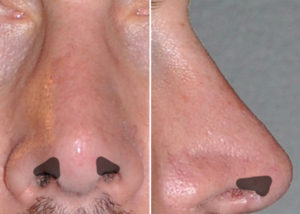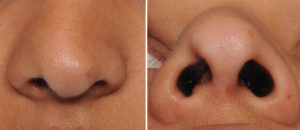The tip of the nose is the most anatomically complex area manipulated in rhinoplasty and also one of the most visible. While it is the first area encountered in rhinoplasty surgery and often the last area of manipulation prior to closure, it is highly prone to irregularities. While they can be very subtle, if it is bothersome to the patient it will likely be a reason for revision rhinoplasty.

Adding structural support with cartilage grafts that span across the soft triangle as alar contour grafts are the known key in both preventing such alar rim notching as well as in its secondary treatment.
In the March 2018 issue of the journal of Plastic and Reconstructive Surgery an article was published entitled ‘The Infratip Lobule Butterfly Graft: Balancing the Transition from the Tip Lobule to the Alar Lobule’. In this paper the authors describe their technique to provide volume to the soft tissue triangle as well as creating a smooth contour between the tip lobule and the alar lobule. Their preferred harvest site is the cartilage obtained from a cephalic trim with desired dimensions of 15mm long by 5mm side in a elliptical shape. It is fixed to the infratip lobule over the middle crura. Its wings then extend caudal to the domes out into the soft triangle area. The wings are not secured by sutures but allowed to act like springs that occupy the soft triangles. By its placement and with its ‘wings’ it gets the name of the butterfly graft.

Dr. Barry Eppley
Indianapolis, Indiana


